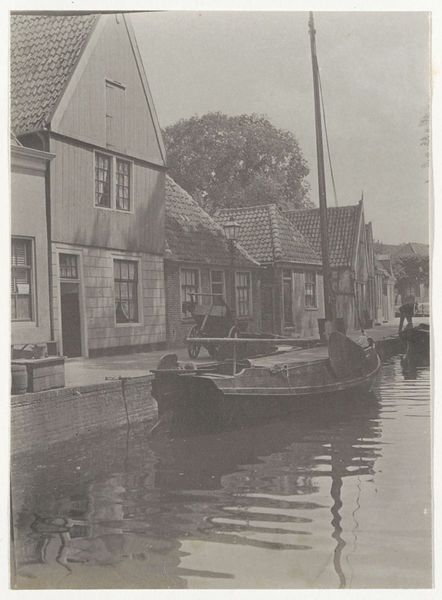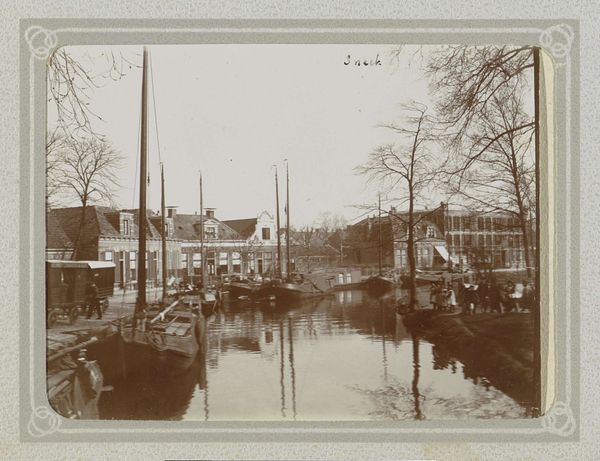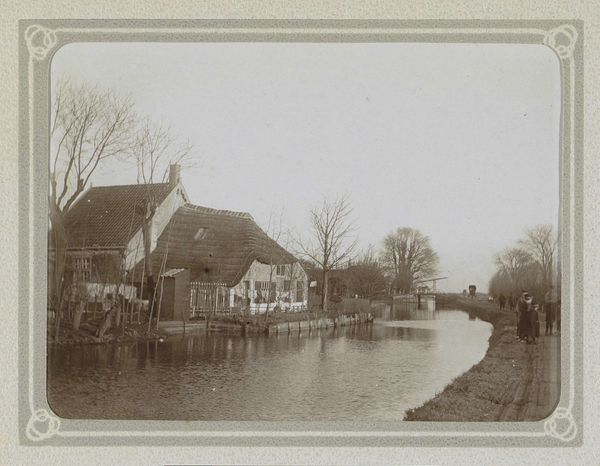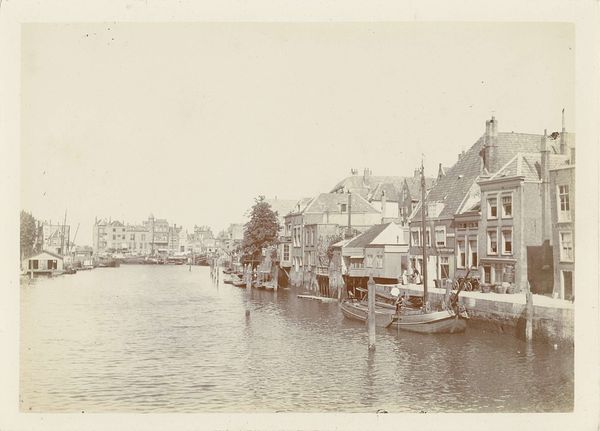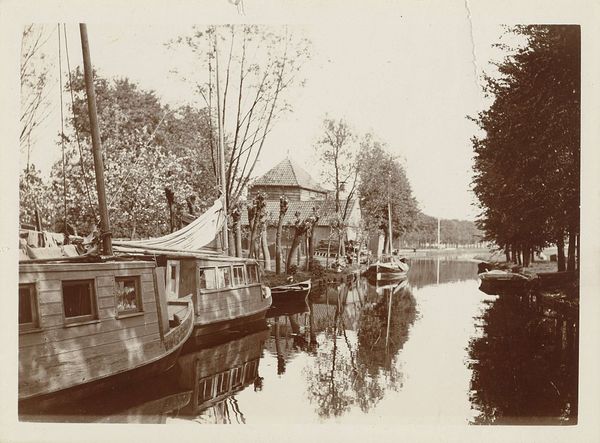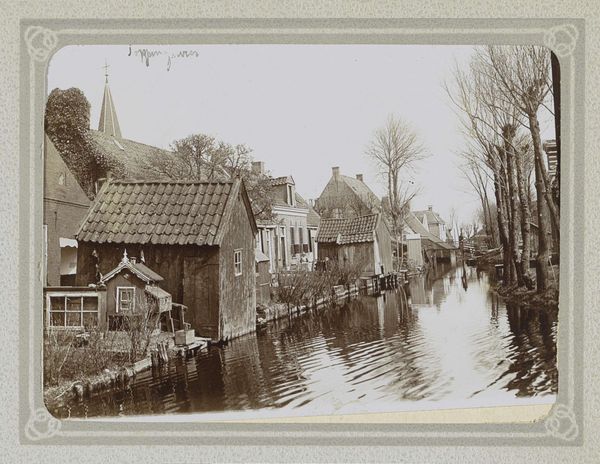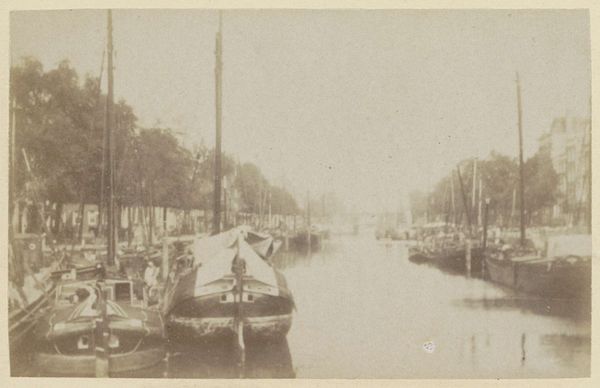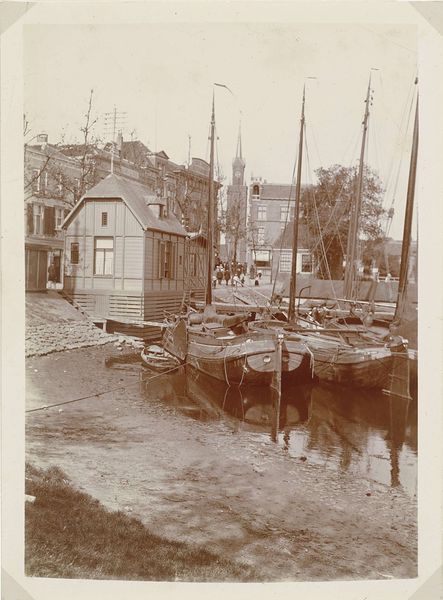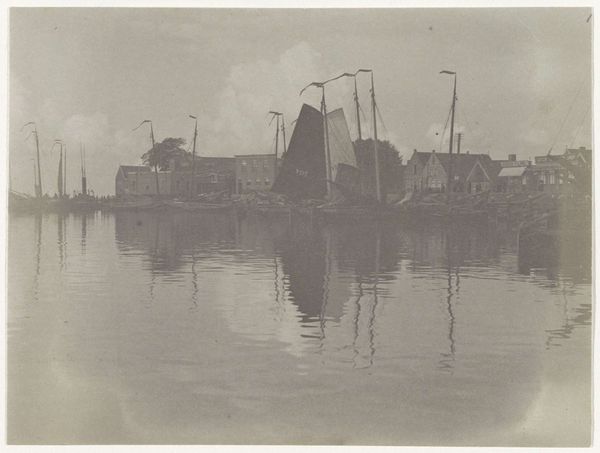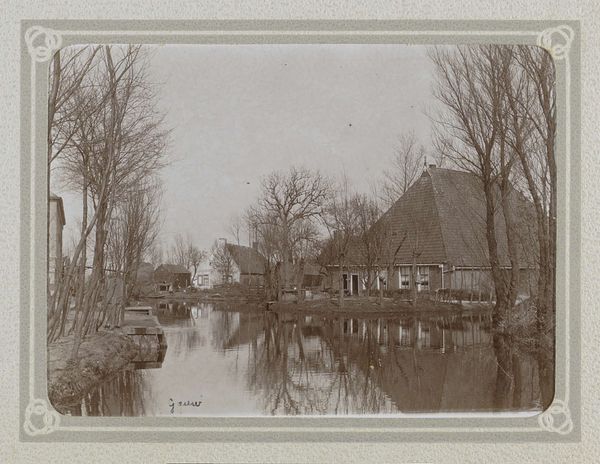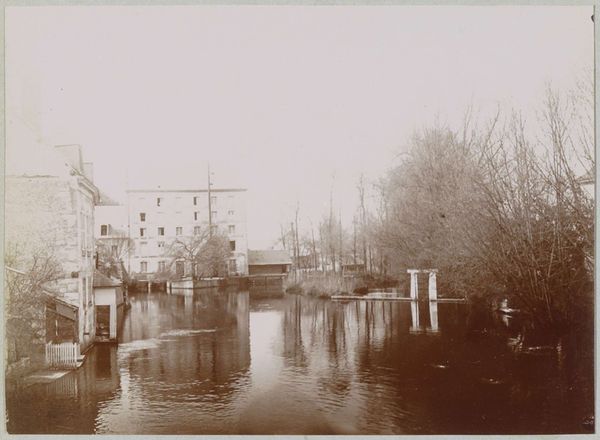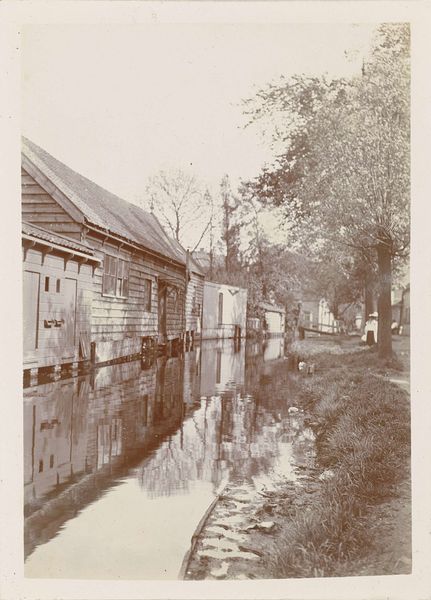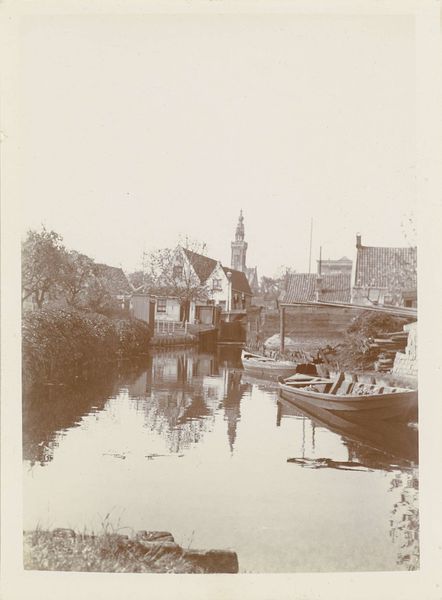
print, photography, gelatin-silver-print
#
dutch-golden-age
# print
#
landscape
#
river
#
outdoor photography
#
photography
#
historical photography
#
gelatin-silver-print
#
cityscape
Dimensions: height 153 mm, width 108 mm
Copyright: Rijks Museum: Open Domain
Editor: This gelatin-silver print, "Bebouwing aan de Zaan in Zaandam," from 1904, captures a slice of Dutch waterfront life. I’m struck by the quiet stillness of the scene. It feels almost… documentary, a record of a specific place and time. What's your read on this piece? Curator: It’s interesting that you see it as documentary. Consider that, around 1904, photography was gaining recognition as a legitimate art form, moving beyond mere documentation. The Dutch Golden Age aesthetic lingers in photographs like these. This photographer would have likely been acutely aware of the artistic precedents of landscape paintings in Dutch culture. Do you see any echoes of those earlier paintings? Editor: I do see some of those echoes. It looks a lot like similar vistas on canals depicted during the Dutch Golden Age! And it does feel constructed, now that you point it out; this is a composition carefully framed. Do you think the presence of the water reinforces its “Dutchness”? Curator: Precisely. Water wasn't just a geographical feature; it was interwoven with Dutch identity, commerce, and defense. Think about the immense land reclamation projects – the ongoing struggle and success of shaping their environment was, and still is, a huge point of national pride. The riverbanks were hubs of economic and social activity, which helps explains this print’s popularity. Also consider that such art offered urban viewers an idealized connection to nature. What do you think? Editor: I hadn't considered that relationship with nature from an urban perspective, but that's an interesting point. Seeing this now, it's not just a picture; it's a document embedded with social and historical meaning, filtered through the artistic lens of the Dutch Golden Age and turn-of-the-century photography! Curator: Exactly! It reminds us how photography can simultaneously reflect and shape our understanding of history and cultural identity. It is also vital to remember its initial cultural appeal, shaped by urban-rural divides, as well as aesthetic tastes.
Comments
No comments
Be the first to comment and join the conversation on the ultimate creative platform.
